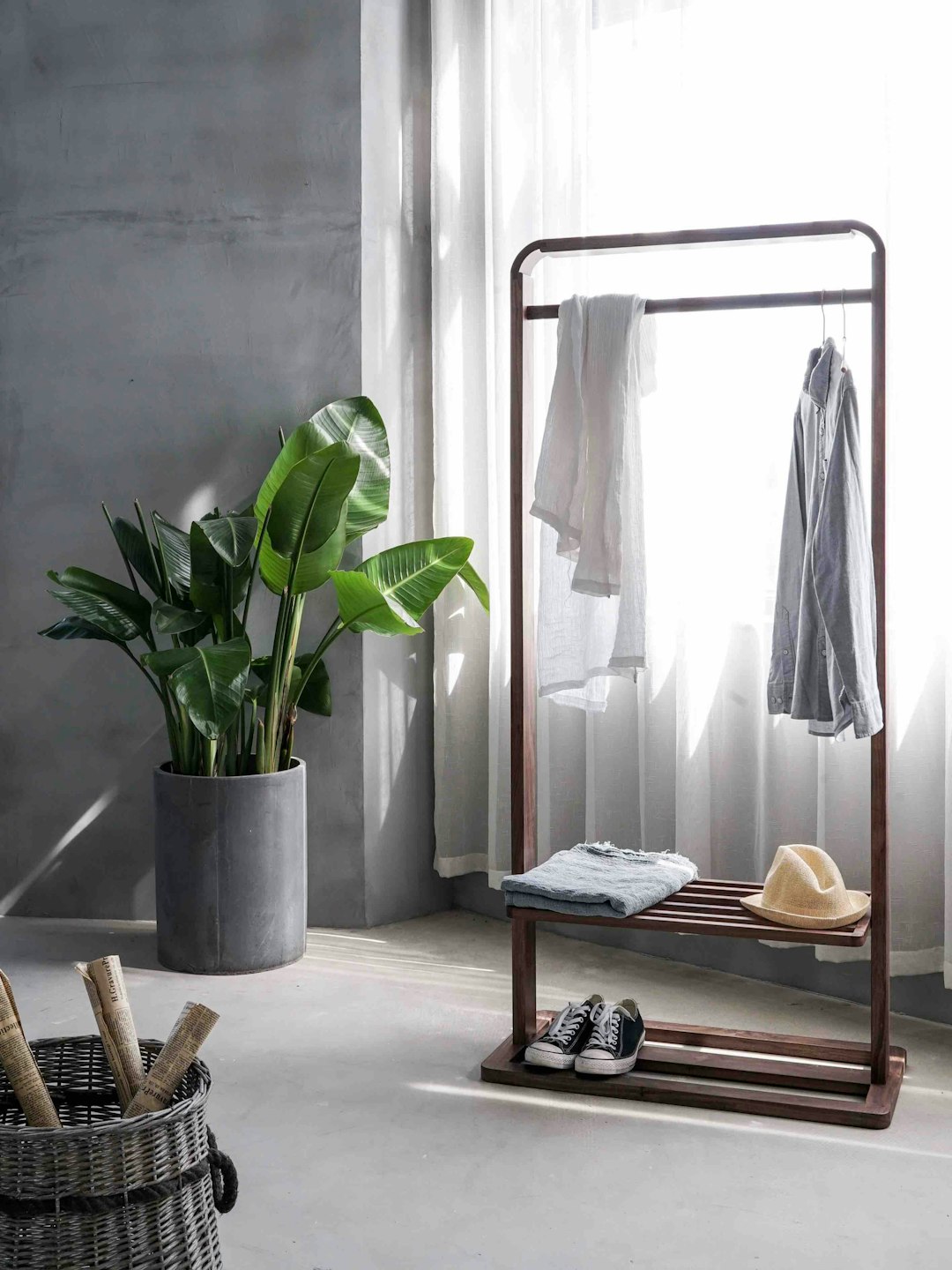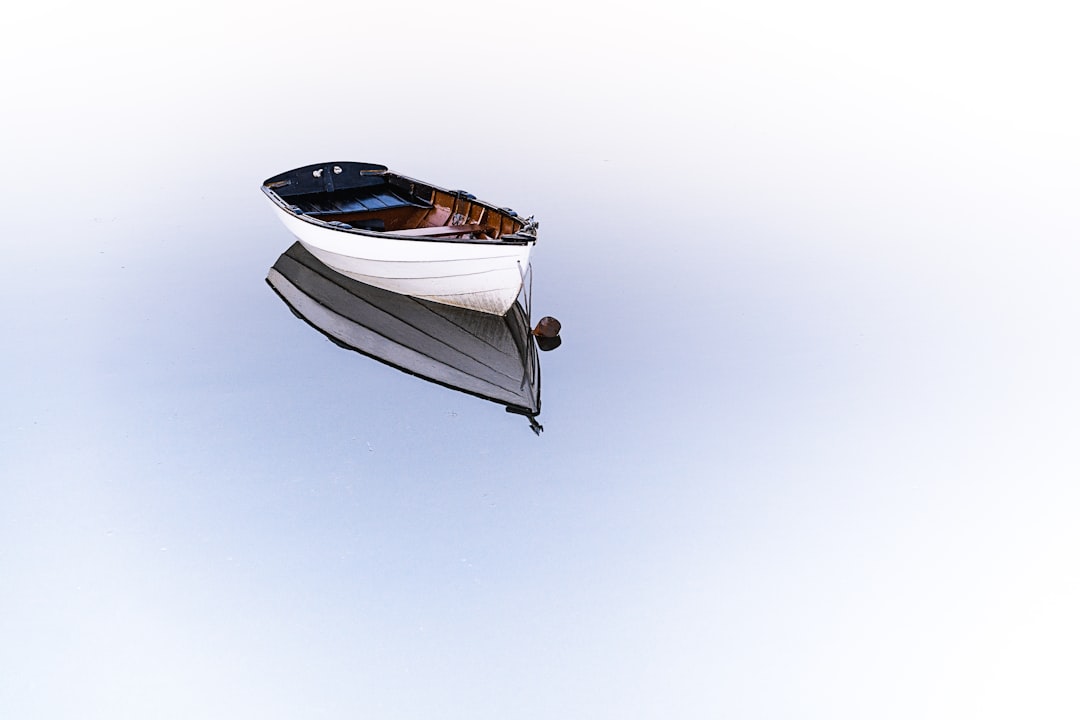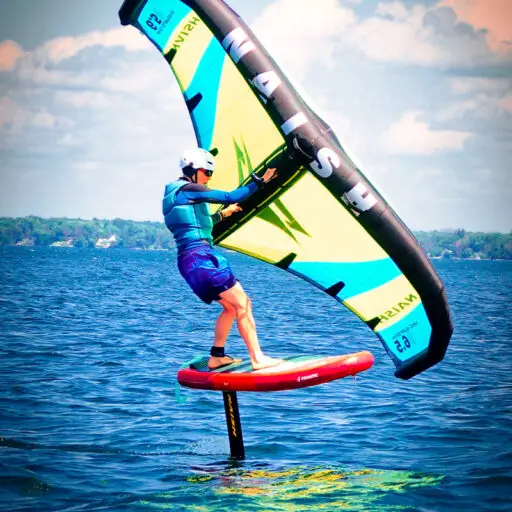Support our hydrofoil educational content for free when you purchase through links on our site. Learn more
Mastering Hydrofoil Design and Construction for Boats: 10 Essential Tips 🚤 [2025]
Have you ever dreamed of gliding effortlessly above the water, feeling the thrill of speed while your boat dances on the waves? Hydrofoil design and construction for boats is not just a technical endeavor; it’s a gateway to a new world of aquatic adventure! In this article, we’ll dive deep into the fascinating world of hydrofoils, exploring everything from the science behind lift to the materials that make these incredible structures possible.
Did you know that hydrofoils can reduce drag by up to 90%, allowing boats to achieve speeds previously thought impossible? Imagine the exhilarating experience of flying above the water, leaving traditional hulls in your wake! Whether you’re a seasoned sailor or a curious beginner, this guide will equip you with the knowledge to understand, design, and even construct your own hydrofoil system.
Key Takeaways
- Hydrofoils can significantly enhance speed and efficiency, reducing drag by up to 90%.
- The design process involves advanced techniques, including Computational Fluid Dynamics (CFD) and real-world testing.
- Material selection is crucial; carbon fiber and fiberglass are popular choices for their strength and weight benefits.
- Regular maintenance is essential to keep your hydrofoil in top condition and ensure longevity.
- Explore top brands like Lift Foils and Moth Class for high-performance hydrofoil options.
Ready to take your boating experience to the next level? Check out our recommended products and start your hydrofoiling journey today!
Table of Contents
Quick Tips and Facts
The Evolution of Hydrofoil Design and Construction
Understanding Hydrofoil Aerodynamics: The Science Behind Lift
The Hydrofoil Design Process: Insights from America’s Cup Technology
From Racing to Recreational: Hydrofoils in Offshore and Production Boating
The Future of Boating: Hydrofoils and Sustainable Design
Unlocking High-Performance Designs with Cloud-Based Aerodynamic Simulation Tools
Key Materials in Hydrofoil Construction: What You Need to Know
Hydrofoil Maintenance: Keeping Your Gear in Top Shape
Comparative Analysis: Top Hydrofoil Brands and Their Innovations
Real-World Applications: Hydrofoils Beyond the Water
Conclusion
Recommended Links
FAQ
Reference Links
Quick Tips and Facts
- Hydrofoils can reduce drag by up to 90%, allowing boats to travel faster and more efficiently. 🚤
- The lift force generated by hydrofoils is proportional to the square of velocity, meaning the faster you go, the more lift you get! 🌊
- Surface-piercing foils are often used in high-speed racing crafts like the AC75, while fully submerged foils are more common in recreational boats.
- Materials like carbon fiber and fiberglass are essential for lightweight and strong hydrofoil construction. 🏗️
- Regular maintenance is crucial for longevity, especially for foils left submerged year-round. 🛠️
The Evolution of Hydrofoil Design and Construction
Hydrofoil technology has come a long way since its inception. Initially designed for speed and efficiency, hydrofoils are now being integrated into various types of vessels, from racing yachts to commercial ferries. The America’s Cup has been a significant driver of innovation, pushing the boundaries of hydrofoil design to achieve unprecedented speeds and performance.
Key Milestones in Hydrofoil Development
- 1906: The first hydrofoil was patented by Enrico Forlanini.
- 1960s: The introduction of hydrofoil ferries in Europe.
- 1980s: Hydrofoils gain popularity in competitive sailing.
- 2010s: The rise of foiling boards and electric hydrofoils for recreational use.
Understanding Hydrofoil Aerodynamics: The Science Behind Lift
Hydrofoils operate on principles similar to airplane wings. As water flows over the foil, it creates a pressure difference that generates lift. This lift allows the boat to rise above the water, significantly reducing drag.
Lift Generation
- Bernoulli’s Principle: Faster water flow over the foil creates lower pressure.
- Angle of Attack: The angle at which the foil meets the water affects lift; too steep can lead to stalling, while too shallow may not generate enough lift.
Lift-to-Drag Ratio
Hydrofoils can achieve a lift-to-drag ratio of up to 10:1, making them incredibly efficient compared to traditional hull designs. This efficiency is crucial for both racing and recreational applications.
The Hydrofoil Design Process: Insights from America’s Cup Technology
The design process for hydrofoils, especially in competitive sailing, involves meticulous planning and advanced technology. The America’s Cup teams utilize cutting-edge software and simulation tools to optimize their designs.
Steps in Hydrofoil Design
- Initial Conceptualization: Designers sketch ideas based on performance goals.
- Computational Fluid Dynamics (CFD): Advanced simulations help visualize how the foil will perform in various conditions.
- Prototyping: Physical models are created for testing in controlled environments.
- Real-World Testing: Full-scale prototypes are tested on the water to validate design assumptions.
Design Considerations
- Weight Distribution: Ensuring the center of gravity is optimized for stability.
- Material Selection: Choosing between carbon fiber for strength or fiberglass for flexibility.
- Regulatory Compliance: Adhering to the rules set forth by racing organizations.
From Racing to Recreational: Hydrofoils in Offshore and Production Boating
Hydrofoils are not just for racing anymore! They have found their way into recreational boating, offering enthusiasts the thrill of flying above the water.
Popular Hydrofoil Models
- Lift Foils: Known for their electric hydrofoil boards, perfect for beginners and pros alike.
- Moth Class: A racing dinghy that has become a favorite among competitive sailors.
- Flying Nimbus: A recreational hydrofoil that offers a smooth ride for casual users.
Benefits of Recreational Hydrofoils
- Increased Speed: Experience faster rides with less effort.
- Reduced Water Resistance: Glide smoothly over the surface, making for a more enjoyable experience.
- Eco-Friendly Options: Electric hydrofoils are paving the way for sustainable boating.
The Future of Boating: Hydrofoils and Sustainable Design
As the world shifts towards sustainability, hydrofoils are leading the charge in eco-friendly boating solutions. Companies are developing electric hydrofoils that minimize environmental impact while maximizing performance.
Innovations in Eco-Friendly Hydrofoils
- Electric Propulsion: Brands like Boundary Layer Technologies are creating zero-emission passenger ferries using hydrofoils.
- Hybrid Designs: Combining traditional engines with hydrofoil technology to improve fuel efficiency.
Challenges Ahead
- Infrastructure Needs: Developing charging stations and support for electric hydrofoils.
- Public Awareness: Educating consumers on the benefits and availability of hydrofoil technology.
Unlocking High-Performance Designs with Cloud-Based Aerodynamic Simulation Tools
The advent of cloud-based simulation tools has revolutionized hydrofoil design. These tools allow designers to test multiple variables quickly and efficiently.
Benefits of Cloud-Based Tools
- Speed: Rapid testing of designs without the need for physical prototypes.
- Collaboration: Teams can work together in real-time, regardless of location.
- Cost-Effectiveness: Reduces the need for expensive materials in the early design stages.
Recommended Tools
- ANSYS Fluent: A powerful CFD tool for analyzing fluid dynamics.
- OpenFOAM: An open-source CFD software that allows for extensive customization.
Key Materials in Hydrofoil Construction: What You Need to Know
Choosing the right materials is crucial for building effective hydrofoils. The most common materials used include:
| Material | Pros | Cons |
|---|---|---|
| Carbon Fiber | Lightweight, strong, and stiff | Expensive and requires careful handling |
| Fiberglass | Durable and more affordable | Heavier than carbon fiber |
| Aluminum | Cost-effective and easy to work with | Heavier and less efficient than composites |
Material Selection Tips
- Consider Weight: Lighter materials improve performance but may increase costs.
- Assess Durability: Ensure materials can withstand harsh marine environments.
- Evaluate Cost: Balance performance needs with budget constraints.
Hydrofoil Maintenance: Keeping Your Gear in Top Shape
Regular maintenance is key to ensuring your hydrofoil performs at its best. Here are some essential tips:
Maintenance Checklist
- Inspect for Damage: Regularly check for cracks or wear on foils and wings.
- Clean After Use: Rinse with fresh water to remove salt and debris.
- Store Properly: Keep foils out of direct sunlight and store in a dry place.
Common Issues to Watch For
- Cavitation: Monitor for signs of cavitation, which can damage foils.
- Corrosion: Check metal components for rust, especially in saltwater environments.
Comparative Analysis: Top Hydrofoil Brands and Their Innovations
When it comes to hydrofoils, several brands stand out for their innovation and performance. Here’s a quick comparison:
| Brand | Key Products | Notable Features |
|---|---|---|
| Lift Foils | Electric Hydrofoil Boards | User-friendly, great for beginners |
| Moth | Racing Dinghies | High-performance, competitive racing |
| Slingshot | Foil Kits | Versatile for various water sports |
| Naish | Foil Boards | Focus on durability and performance |
Brand Insights
- Lift Foils: Users rave about the ease of use and the thrill of flying above the water. Check out their official website.
- Moth Class: Competitive sailors appreciate the speed and agility of Moth dinghies. Learn more about the Moth Class here.
Real-World Applications: Hydrofoils Beyond the Water
Hydrofoil technology is not limited to boats! Its applications extend into various fields, including:
- Transportation: Hydrofoils are being used in passenger ferries, reducing travel time and fuel consumption.
- Research: Scientists are using hydrofoil designs to study marine life and environmental impacts.
- Recreation: Hydrofoils are becoming popular in sports like kiteboarding and windsurfing.
Future Innovations
As technology advances, we can expect to see even more innovative uses for hydrofoils, including autonomous vehicles and enhanced recreational equipment.
Conclusion

Hydrofoil design and construction have evolved dramatically, driven by advancements in technology and a growing demand for efficiency and sustainability. Whether you’re a racer looking to gain an edge or a recreational boater seeking a thrilling ride, understanding the intricacies of hydrofoil technology is essential.
For more insights and resources, check out our Hydrofoil Basics and Hydrofoil Equipment Reviews.
Recommended Links
- How do hydrofoils work on boats?
- Advanced Hydrofoiling Techniques
- Hydrofoil History
- Hydrofoil Industry News
FAQ

-
What is a hydrofoil?
- A hydrofoil is a lifting surface that operates in water, similar to an airplane wing, allowing boats to rise above the surface and reduce drag.
-
How do I maintain my hydrofoil?
- Regularly inspect for damage, clean after use, and store properly to ensure longevity.
-
Can I build my own hydrofoil?
- Yes! Many enthusiasts build their own hydrofoils using materials like carbon fiber and fiberglass. Check out DIY guides for more information.
Reference Links
Conclusion
 Key Takeaways
Key Takeaways
- Positives: Hydrofoils offer remarkable speed and efficiency, reducing drag by up to 90% and allowing boats to glide smoothly over the water. They are becoming increasingly popular in both competitive and recreational boating, with advancements in materials and design leading to more accessible options for enthusiasts.
- Negatives: However, the complexity of design and construction can be daunting for beginners, and maintenance is essential to ensure longevity. Additionally, the initial investment in high-quality materials can be significant.
Recommendation: If you’re considering diving into the world of hydrofoiling, we confidently recommend exploring brands like Lift Foils for electric hydrofoil boards or the Moth Class for racing enthusiasts. Both offer exceptional performance and user-friendly designs that cater to a range of skill levels.
For those interested in building their own hydrofoil, check out the detailed guide on How to make your own Hydrofoil | Seabreeze for a comprehensive DIY approach.
Recommended Links
- 👉 Shop Lift Foils on: Amazon | Lift Foils Official Website
- 👉 Shop Moth Class on: Amazon | Moth Class Official Website
- Books on Hydrofoil Design: Hydrofoils: Design, Construction and Performance
FAQ

What are the key considerations for designing a hydrofoil system for a boat, and how do they impact performance and stability?
Key Considerations
- Hydrodynamic Shape: The shape of the hydrofoil affects lift and drag. A well-designed foil can maximize lift while minimizing drag.
- Material Selection: Choosing lightweight yet strong materials like carbon fiber can enhance performance without adding unnecessary weight.
- Angle of Attack: The angle at which the hydrofoil meets the water influences lift generation. An optimal angle is crucial for maintaining stability and preventing stalling.
These factors collectively impact how well the boat performs in various conditions, influencing speed, maneuverability, and overall stability.
How does the shape and size of a hydrofoil affect its lift and drag characteristics, and what are the optimal designs for different types of boats and operating conditions?
Shape and Size Impact
- Lift Generation: Larger surface areas can generate more lift but may also increase drag. Therefore, the design must balance size and shape to optimize performance.
- Aspect Ratio: A higher aspect ratio (long and narrow) typically results in better lift-to-drag ratios, making it ideal for racing boats, while shorter, wider foils may be better for stability in recreational crafts.
Optimal designs vary based on the intended use; racing boats benefit from high aspect ratios, while recreational boats may prioritize stability and ease of use.
What materials are commonly used in the construction of hydrofoils, and what are their advantages and disadvantages in terms of strength, durability, and cost?
Common Materials
- Carbon Fiber: Offers high strength-to-weight ratios and excellent stiffness, making it ideal for performance-oriented designs. However, it is more expensive and requires careful handling.
- Fiberglass: More affordable and durable, but heavier than carbon fiber, which can affect performance.
- Aluminum: Cost-effective and easy to work with, but heavier and less efficient compared to composite materials.
Choosing the right material depends on the balance between performance needs and budget constraints.
What are the main challenges and limitations of designing and constructing a hydrofoil system for a boat, and how can they be overcome through innovative design and engineering solutions?
Challenges and Limitations
- Complexity of Design: Hydrofoil systems require precise engineering to ensure optimal performance. Utilizing advanced simulation tools can help streamline this process.
- Maintenance Requirements: Regular upkeep is necessary to prevent wear and damage, particularly for foils left submerged. Implementing user-friendly designs can simplify maintenance tasks.
Innovative solutions, such as automated monitoring systems, can help address these challenges by providing real-time data on foil performance and condition.
How do hydrofoils interact with the hull and other components of a boat, and what are the implications for overall boat design and performance?
Interaction with Hull
- Hydrodynamic Integration: The design of the hull must complement the hydrofoil to minimize drag and maximize lift. This requires careful consideration of the hull shape and foil placement.
- Weight Distribution: Proper weight distribution is crucial for stability and performance. The placement of the hydrofoil can significantly affect the boat’s center of gravity.
These interactions necessitate a holistic approach to boat design, ensuring that all components work together seamlessly for optimal performance.
What are the safety considerations and regulations that must be taken into account when designing and constructing a hydrofoil system for a boat, and how can they be addressed through proper design and testing?
Safety Considerations
- Regulatory Compliance: Adhering to local and international regulations regarding hydrofoil design is essential for safety and legality.
- Testing Protocols: Rigorous testing under various conditions is necessary to ensure reliability and safety. This includes assessing the hydrofoil’s performance in rough waters and at high speeds.
Implementing comprehensive testing and adhering to regulations can mitigate risks associated with hydrofoil systems.
How can hydrofoil design and construction be optimized for specific applications, such as racing, cruising, or fishing, and what are the trade-offs between different design priorities?
Application Optimization
- Racing: Focus on maximizing speed and efficiency, often at the expense of stability. High aspect ratio foils and lightweight materials are preferred.
- Cruising: Emphasize comfort and ease of use, which may involve sacrificing some speed for stability and user-friendliness.
- Fishing: Design for stability and maneuverability, which may require different foil shapes and sizes compared to racing designs.
Understanding the specific needs of each application allows designers to make informed trade-offs that enhance performance.
What are the latest advancements and innovations in hydrofoil design and construction, and how are they expected to impact the future of boat design and performance?
Recent Innovations
- Electric Hydrofoils: The rise of electric propulsion systems is transforming hydrofoil technology, making it more accessible and environmentally friendly.
- Smart Technology: Integration of sensors and AI for real-time performance monitoring is enhancing safety and efficiency.
These advancements are paving the way for a new era of hydrofoiling, where performance, sustainability, and user experience are prioritized.
